
 Myron Henry "Grim" Natwick (August 16, 1890 to October 7, 1990) | |
 Selected Covers (Hover to View) Selected Covers (Hover to View) | |
Even though he was only involved in sheet music for a few years, the collective works of Myron Natwick have been seen at some point by most everyone in the Western world, probably more than any other artist involved in sheet music cover illustrations. But that was primarily through another medium that he took to later in his life. He was born in Grand Rapids, Wisconsin (now the western suburb of Wisconsin Rapids), in 1890 to first generation Norwegian James W. Natwick and his Wisconsin-born wife Henrietta Lyon. Some sources have claimed a last name of Nordveig for Myron at birth, and for his family. However, that was the non-Anglicized name of his Norwegian immigrant grandfather Ole Nordveig.
The 1870 enumeration has Natwig as the family name,
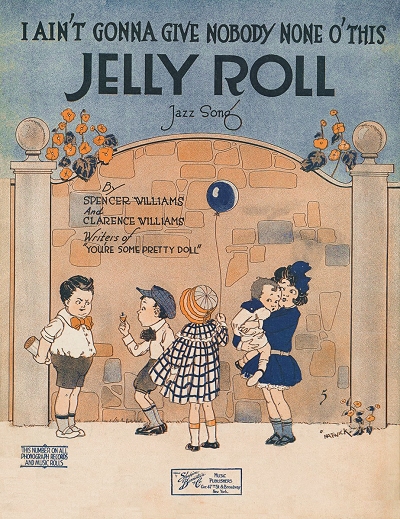
 and the 1880 enumeration clearly shows that the family had finally settled on Natwick more than a decade before Myron was born, which dispels that notion. Myron was the third of eight siblings, including Franklin "Frank" James (4/10/1887), Ruby E. (8/29/1888), Albert Guy (6/15/1892), Donald Lyon (12/9/1893), John Wesley (4/8/1895), Gladys Julia (8/26/1897), and Vernon George (4/13/1901). One other died in infancy in the early 1900s.
and the 1880 enumeration clearly shows that the family had finally settled on Natwick more than a decade before Myron was born, which dispels that notion. Myron was the third of eight siblings, including Franklin "Frank" James (4/10/1887), Ruby E. (8/29/1888), Albert Guy (6/15/1892), Donald Lyon (12/9/1893), John Wesley (4/8/1895), Gladys Julia (8/26/1897), and Vernon George (4/13/1901). One other died in infancy in the early 1900s.


The 1880 and 1900 enumerations both showed James as a proprietor of a furniture store in Grand Rapids. By 1900 they were doing well enough to support the employment of two domestics. The 1905 Wisconsin census showed Frank working in the relatively new field of electrician. Myron was well-liked and quite successful while attending Lincoln High School. He was a member of both the football and track teams. At age 16 he was elected captain of the track team and held the position from his sophomore to senior years. In one statewide meet in late May of 1909, as a senior, he won the 120-yard hurdle event, then second in the 220-yard hurdle, and finally third in the discus throw, as per the Grand Rapids Tribune of June 2, 1909. His brother Frank was also quite athletic, and was reportedly one of the first track athletes from Wisconsin to be invited to an Olympiad in 1908. Myron wrote poetry, some of which won the occasional newspaper submission prize, and even appeared in school plays as an actor, in addition to being the president of his senior class. However, his true passion during high school clearly became drawing, as he relayed in an interview to the [Wisconsin Rapids] Daily Tribune published July 20, 1974:
The drawing interest was there in high school, however. According to things he's thrown out the past week, "I did nothing else," but draw Natwick said. A couple boxes of his old books had sketches in them, he said. Drawing was a "propelling feeling that I couldn't hold back," added Natwick.
It was also part of his personality trait that gave Myron his lifelong nickname, possibly even before high school. It had to do with his "anything but Grim" attitude, and from then on - at least when it came to non-classic art forms, he was known as Grim Natwick.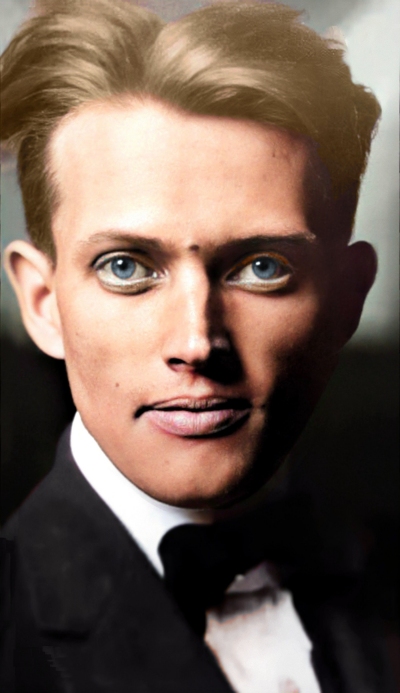 Fresh out of high school Grim headed south to Illinois and spent some of his college training at the Art Institute of Chicago. He returned home on breaks, and his visits usually managed to make it into the Daily Tribune. While he obviously continued drawing during his college years, little if any of his work created a revenue stream. However, he made friends who worked at a music publishing company, and by 1915 had been drafted to draw covers for sheet music, which helped fund his training at the National Academy of Design. Grim turned out over 100 covers for various firms throughout the next decade, even when stationed at Camp Grant near Rockford, Illinois, during the last months of World War I. Having not gone into action, he was discharged in October 1918. In the interim, he met the love of his life in Ida Lucille Wittenberg, and they were married on July 12, 1917.
Fresh out of high school Grim headed south to Illinois and spent some of his college training at the Art Institute of Chicago. He returned home on breaks, and his visits usually managed to make it into the Daily Tribune. While he obviously continued drawing during his college years, little if any of his work created a revenue stream. However, he made friends who worked at a music publishing company, and by 1915 had been drafted to draw covers for sheet music, which helped fund his training at the National Academy of Design. Grim turned out over 100 covers for various firms throughout the next decade, even when stationed at Camp Grant near Rockford, Illinois, during the last months of World War I. Having not gone into action, he was discharged in October 1918. In the interim, he met the love of his life in Ida Lucille Wittenberg, and they were married on July 12, 1917.
 Fresh out of high school Grim headed south to Illinois and spent some of his college training at the Art Institute of Chicago. He returned home on breaks, and his visits usually managed to make it into the Daily Tribune. While he obviously continued drawing during his college years, little if any of his work created a revenue stream. However, he made friends who worked at a music publishing company, and by 1915 had been drafted to draw covers for sheet music, which helped fund his training at the National Academy of Design. Grim turned out over 100 covers for various firms throughout the next decade, even when stationed at Camp Grant near Rockford, Illinois, during the last months of World War I. Having not gone into action, he was discharged in October 1918. In the interim, he met the love of his life in Ida Lucille Wittenberg, and they were married on July 12, 1917.
Fresh out of high school Grim headed south to Illinois and spent some of his college training at the Art Institute of Chicago. He returned home on breaks, and his visits usually managed to make it into the Daily Tribune. While he obviously continued drawing during his college years, little if any of his work created a revenue stream. However, he made friends who worked at a music publishing company, and by 1915 had been drafted to draw covers for sheet music, which helped fund his training at the National Academy of Design. Grim turned out over 100 covers for various firms throughout the next decade, even when stationed at Camp Grant near Rockford, Illinois, during the last months of World War I. Having not gone into action, he was discharged in October 1918. In the interim, he met the love of his life in Ida Lucille Wittenberg, and they were married on July 12, 1917.It was also in 1918 when Grim first encountered his future, albeit in a primitive form. He was hired by art school classmate Gregory LaCava at International Film Service Productions, a studio owned by William Randolph Hearst, who by then had his hands in as much media as he could. Natwick was given the opportunity to get into film animation not long after Winsor McCay had demonstrated some of his early work drawn entirely on paper, rather than the animation cells that would soon become the norm. It was a struggle at first, and he nearly quit, but when offered $100 per week to stay, a great deal in 1918, particularly considering his new matrimonial status, he finished off the frustrating task of animating a racehorse in motion. Within a short time, he turned out to be a natural at it. It is unclear if his time at Camp Grant kept him from his animator's stand outside of basic training, but with everybody pitching in, it was likely not a detriment to his position.
In early 1919, now out of the army and fully trained in several art disciplines, Natwick decided to take on what was then the graphics art center of the United States, New York City. He and Ida were found there for the January 1920 census, with Grim now working as a newspaper and animation cartoonist for the Hearst Syndicate. According to Grim concerning Hearst, "He was insane about cartoons."
Natwick continued to ply his increasing skill set to sheet music covers as well, which were starting to skew away from cartoonish images in some cases, and more toward realizations of the female form. If he was doing any animation in the early 1920s is unclear. To that end, after International Film Service folded, he decided to further his education abroad. Grim and Ida then sailed for Europe in 1922, where he spent much of the next three years attending the Vienna National Academy in Austria. (Some sources cite 1925 as the year, but an article in the Wisconsin Rapids Daily Tribune pinpoints this to February 1922.) While there Natwick spent a great deal of his study learning to drew the anatomy of women, and of the human form in general. To that end he was influenced by artists Egon Schiele and Gustav Klimt. He returned to the United States in late 1924. The existence of some of his covers on sheet music published in 1924 into early 1925 helps to further codify this.
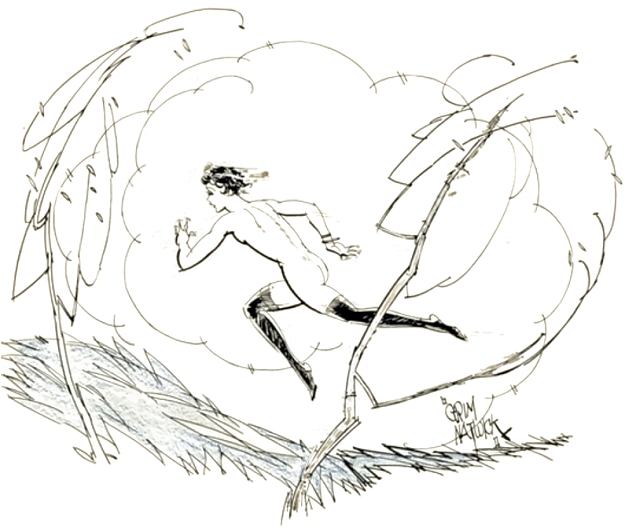 |
Sadly, part of the return was due to Ida becoming ill. She died while in Marietta, Ohio, on March 18, 1925, living Grim a widower. Over the next few months, Natwick made several appearances in his hometown doing lectures on drawing, and even displaying some of his art from his adventure in Europe. He then returned to New York City to rejoin his career as a cover artist and cartoonist, while still creating very fine art of women, including at least one outstanding music cover for the piece You're the Only One published by the house of Jerome H. Remick. He also found work in animation, this time working to produce Krazy Kat cartoons. There were two other artists there with which he would be long associated, Jimmie "Shamus" Culhane, and Walter Lantz. After a couple of years at that studio, Grim made a couple of major changes in his life.
First, Natwick remarried, this time to Christine Frances Ferris, on May 21, 1929. Secondly, he had joined the quickly expanding animation studio of Max and David Fleischer. While 1928's Disney revelation, Steamboat Willie, was not the first sound cartoon produced, it is considered to be the first with a synchronized soundtrack, albeit done to the complete animation rather than before it was started. By 1929 others were jumping on what looked to be a lucrative bandwagon (the experiences of Disney Studios into the mid-1930s suggested otherwise), and the Fleischers were among them. They presented Grim with a record of singer Helen Kane singing I Wanna Be Loved By You or something similar, and asked if he could create the appropriate cartoon character that would be Kane's avatar of sorts. The character would be a girlfriend to their marquee cartoon star, Bimbo, a dog-like figure sort of loosely based on any number of anthropomorphic cartoonish human animals. In 1974 he recalled the task:
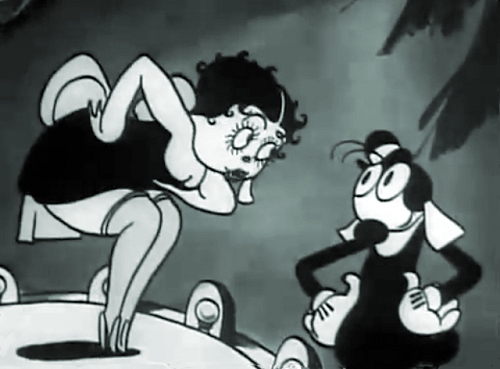 Grim Natwick based Betty Boop on a "rag time piece of music." He created her while working at the Max Fleischer studio in New York. He was given a piece of music sung by Helen Kane, Natwick recalls. She was "one of these $10,000 a night singers at that time (early 1930's) because of the 'Boop-boop-a-doop' type singing," said Natwick. In Betty's first cartoon appearance Helen Kane provided the vocals [it was actually sound-alike Margie Hines] and Miss Boop "did a little dance for two or three minutes." A little story was also woven into it, he added. Natwick said he first designed Betty "as sort of a little round faced dog. Her ears gradually became earrings. She was saying 'Boob-boop-a doop' so of course she had to be cute. [She] wore the first mini-skirt, [and] had a cute little garter with a rose in it." She was designed after Helen Kane, said Natwick, who wore "spit curls" and was, "kind of a pouty little singer."
Grim Natwick based Betty Boop on a "rag time piece of music." He created her while working at the Max Fleischer studio in New York. He was given a piece of music sung by Helen Kane, Natwick recalls. She was "one of these $10,000 a night singers at that time (early 1930's) because of the 'Boop-boop-a-doop' type singing," said Natwick. In Betty's first cartoon appearance Helen Kane provided the vocals [it was actually sound-alike Margie Hines] and Miss Boop "did a little dance for two or three minutes." A little story was also woven into it, he added. Natwick said he first designed Betty "as sort of a little round faced dog. Her ears gradually became earrings. She was saying 'Boob-boop-a doop' so of course she had to be cute. [She] wore the first mini-skirt, [and] had a cute little garter with a rose in it." She was designed after Helen Kane, said Natwick, who wore "spit curls" and was, "kind of a pouty little singer."Natwick animated the first six Betty Boop cartoons which were followed by 94 more. "She was considered to be so sexy that Hollywood banned her... locked her up for years." She was "so modest" compared to what is seen on the screen today, he added.
It was Grim's propensity for pronounced character animation, still a growing concept in the early 1930s, that brought him to the attention of iconic studio head, Walt Disney, and his brother Roy Disney. Based on how Betty Boop was portrayed in 1931's The Bum Bandit, Walt sent Roy cross-country from California to recruit Grim for his Hyperion studio, following the vacancy left by his former head animator, Ub Iwerks, who had left to form his own studio. Knowing some of Iwerks' accomplishments, and that he had been the core of the studio for at least four or five years, Grim, based on some inquires he made, figured that Walt was not the creative genius, so he declined a reportedly generous offer. But he and Christine, who was with child at that point, still went to California so Grim could work at Ub's studio, joining some of his fellow colleagues who had done the same. Grim was soon managing the studio for Ub, who was working on new technologies (which would later be brought back to Disney).
Nancy Ann Natick was born in Los Angeles on August 25, 1931. However, there may have already been trouble brewing in the Natwick household. At some point over the next year the couple separated, and Christine took Nancy Ann with her. They were divorced in 1934, and Christine was quickly remarried to Laddie S. Cook. Myron appears to have never remarried again. From 1931 to 1934, he and his team turned out some memorable work for Iwerks that still plays well decades later. However, at some point in late 1934 he heard the buzz that Walt was working on doing a full-length animated film. Intrigued by the possibility, Grim left Iwerks for what was now the most prominent animation studio in the world.
As always, with Disney, and even into the 21st century, they used shorts in order to work out issues in technology and technique before attempting the larger chunks, of which Snow White and the Seven Dwarfs a considerable size. Given his skill with female figures, and following a tepid attempt by others in animating Goddess of Spring (1934), he took lead on the primary female figure in The Cookie Carnival, and the satisfactory outcome put him in a lead position for Snow White. He became one of three head animators charged with bringing the heroine to life on screen, the others being Ham Luske (whom he had replaced as the lead) and Natwick's assistant, Jack Campbell. Some experts can easily tell who animated what scene, and Brim's were clearly the most deftly handled segments. He also reportedly turned out finer animation much faster than the others. The end result was a historic triumph that set a very high bar at the end of 1937 for other studios to follow.
However, given Luske's seniority at Disney Studios, and his billing as the lead in the credits, Natwick was further non-plussed when a promised bonus in response to box office receipts was not issued to him, and the Luske's name had been applied to scenes that Grim had clearly been in charge of over the 20 month production period. Of his time at Disney, Natwick gave an assessment in 1974:
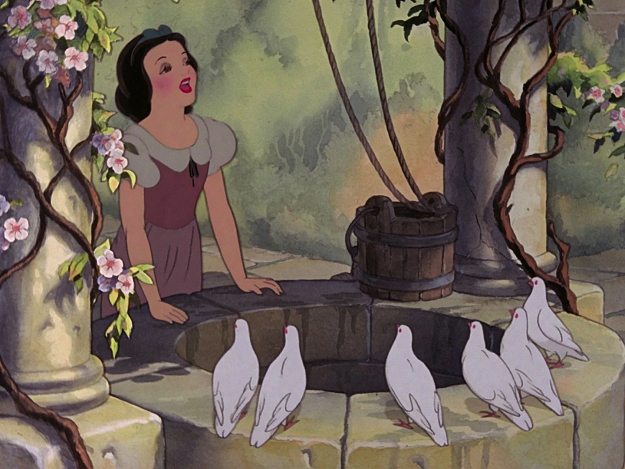 |
Snow White was a "very complicated" character to draw and took up to five times as long to finish as others. Like Mickey Mouse, said Natwick, people had the idea Disney drew his own characters but when he got there 200 artists were already working for the studio, Natwick said... Over the years [Snow White] remained Disney's favorite picture, he recalls. Natwick also worked on the opening scene of what many consider Disney's most famous animation film, "Fantasia." The film was the "greatest piece of animation ever," said Natwick, but the audience in the mid-1940's wasn't ready for it. The fantasy of pictures "did not appeal to war-minded citizens," Natwick said. "Too many who might have liked it were in the Army."
Although he had already done some preliminary work on Fantasia, Dumbo and Pinocchio, Natwick decided to head for a friendlier climate in late 1939. He was not readily found in the 1940 enumeration, so may have been on the road or living in temporary quarters. He had gone to Florida where Max Fleischer had relocated his studio, and spent maybe a year working with his old boss again. Among the notable features they turned out was Gulliver's Travels, but without the amalgamation of talent that Disney had in his stable, Natwick could not turn out as good of a product without that support. However, Betty Boop was still in play, and Grim worked on one of the last of her cartoons. He was then offered ownership rights to the character, but did not follow up on the necessary legal work to retain what was presented to him. When the character and her library of films was sold to King Features Syndicate many years later, Grim, who may have thought the handshake was enough, sued to get some of the take, but ended up with nothing, much to his regret.
By early 1942 Grim was back in California, living in Santa Monica when he filled out his draft record, and showing as self-employed. His contacts were still his parants in Wisconsin Falls, his father at 85 and mother at 78. During World War II, Natwick went to work with another of his old pals who had also formed his own studio, Walter Lantz.
Some of his other buddies were also with Lantz, so it was a comfortable reunion. As most of the studios did, they made some training films for the war effort as requested by the Government and the War Department. Lantz later called Grim the best animator he had ever worked with. Of course, his primary marquis star was Woody Woodpecker, who had originally been voiced by Mel Blanc, known largely for the collection of Warner Brothers characters he had helped to create. But Natwick was also engaged in some more serious artistic endeavors on the side, and still did sketches and some paintings, more for friends and associates than for gallery exhibits. His true love remained in animation, and he continued to work with Lantz throughout the decade.
 |
In the 1950s, nearing what many considered a retirement age of 60, Nat was recruited for the new UPA studio in New York, which would soon become a primary provider of animation for television. They had a very simplistic style compared to Disney, MGM, or even Warner Brothers. Among their properties that he worked on was Mr. Magoo, voiced by Jim Backus. They also contracted out several television commercials for Madison Avenue firms, and industrial animations for large manufacturers. After UPA dissolved, Natwick was more or less a freelance artist,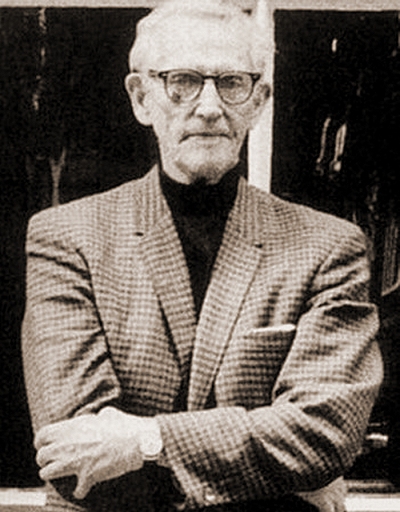 and did television work as varied as Crusader Rabbit, George of the Jungle, and other Saturday morning fare of the 1960s and 1970s. From late 1973 into the summer of 1974, Grim was in London both instructing British animators and working on the film Raggedy Ann & Andy (released 1977) at the studio of Richard Williams.
and did television work as varied as Crusader Rabbit, George of the Jungle, and other Saturday morning fare of the 1960s and 1970s. From late 1973 into the summer of 1974, Grim was in London both instructing British animators and working on the film Raggedy Ann & Andy (released 1977) at the studio of Richard Williams.
 and did television work as varied as Crusader Rabbit, George of the Jungle, and other Saturday morning fare of the 1960s and 1970s. From late 1973 into the summer of 1974, Grim was in London both instructing British animators and working on the film Raggedy Ann & Andy (released 1977) at the studio of Richard Williams.
and did television work as varied as Crusader Rabbit, George of the Jungle, and other Saturday morning fare of the 1960s and 1970s. From late 1973 into the summer of 1974, Grim was in London both instructing British animators and working on the film Raggedy Ann & Andy (released 1977) at the studio of Richard Williams.While Grim never fully retired, he did kick back a bit in his late eighties and enjoyed the opportunity to either present history in his field, or provide some form of mentorship and training of younger prospects. It is enticing to think of the possibilities if he had been treated a bit better and stayed at Disney. He most certainly would have been what would have been referred to as Walt's "Ten Old Men." But he still left a considerable mark on the world of entertainment, and was celebrated on his 100th birthday in 1990 at the [now defunct] Sportsman's Lodge in Studio City, California. This author, through his actor father who was a member of SAG, AFTRA and PPB, met many now-famous figures of film and animation at that venue growing up, including some who had voiced Grim's many characters, but never had the opportunity to see Natwick himself. Ward Kimball, Frank Thomas, Ollie Johnston and Chuck Jones, yes, but not the senior statesman originator of Betty Boop, who endured long enough to be represented in the 1988 feature film Who Framed Roger Rabbit. Two months after his centennial celebration, Myron "Grim" Natwick departed for another drawing board somewhere beyond, but his creations endure.
As for Natwick's catalog of sheet music covers, they presented a wide scope of his talents from whimsical caricature (some of it including Negro stereotypes that would later be deemed unacceptable) to the realism found on romantic tunes of the early-to-mid 1920s. He often worked with only one or two colors and black, but with careful shading and half-tone work was able to create a wider palette of shades that was a standout on such covers as At the League of Nations Ball. Grim also was able to impart a sense of motion in a still drawing (a hint of his potential in animation), such as with Dancing Down in Dixieland. His later covers, particularly after his European training, show a propensity for fine art and elegant female figures. Much of this would be reflected in his fine work with Disney from the mid-to-late 1930s.
Much of the information here came from newspaper reports of Natwick's ongoing activities, later interviews, and the usual government records. There are also a couple of good web resources for digging further into Natwick's life and work, particularly (where some of the information was culled from) Stephen Worth's Animation Resource website, with some personal perspectives on the force that was Grim Natwick. This author, who grew up around a lot of the people Grim crossed paths with from Disney, Lantz and Warner Brothers, also recommends a view with fresh eyes of Snow White and the Seven Dwarfs to see if you can discern the differences between the three key animators who drew here (key animators drew a frame for every half second to one second of film, and in-betweeners filled the gaps between those key frames). If you are paying attention you can see which one moves the most realistically. Seek out the early Betty Boop cartoons (most of them are out there). Then find some Woody Woodpecker, just because. Ha-ha-ha-hah-hah, ha-ha-ha-hah-hah!
?